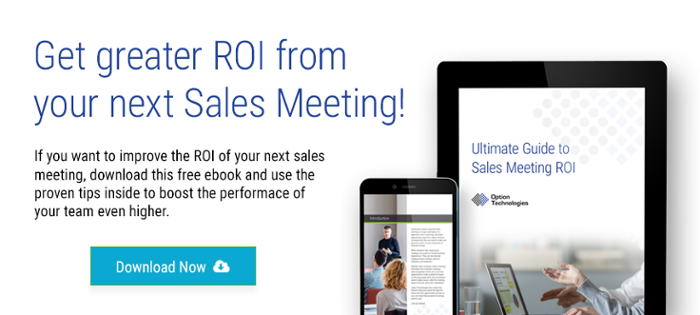A sales strategy is a high-level plan outlining both your sales goals and exactly how you intend to get there. But if your plan contains blind spots, it will be tricky to execute. Here’s how to create and implement a sales strategy that will get you exactly where you want to be.
Start with your goals.
There’s no sense in developing a roadmap unless you know where you’re hoping to arrive. These should be SMART goals, which are Specific, Measurable, Achievable, Relevant, and Time-bound. (There’s some debate about what words go into SMART, so go with whatever your business typically uses. They’re all fairly similar.) In sales, your primary goals will probably relate to things like revenue, market share, or profit.
Work backwards from goals to actions.
What would need to happen in order for you to achieve that percentage of the market? What would need to happen in order to accomplish that? What would you need (in the way of time, money, tools, or human resources) to make that happen? What tasks would need to be completed?
Read your reality.
Once you have an idea of what would need to happen, it’s time to understand how they fit into the real world. Looking at target customers, market conditions, opportunities, and potential roadblocks to success with clear vision means avoiding both unwarranted pessimism and rose-colored glasses.
Who are your customers, really? Who are your competitors? Why are people actually buying your product? (And why aren’t they?) Having all this critical information on hand enables you to drag your sales strategy out of the realm of the theoretical and place it firmly on solid ground.
Do you have what you need?
It’s not unusual to find that you don’t have everything you need. Maybe you know how to sell your product to one demographic, but it turns out you don’t know how to appeal to the customer that you really want.
Perhaps you need to take advantage of all the customer information you’ve collected, but your database is a mess and you don’t have the staff needed to utilize it effectively. Perhaps your sales team is enthusiastic but mostly new, and lacking in some of the key communication skills the plan requires.
What all this means is that, if you don’t have what you need to make your sales strategy work, you have two options: change your plan to make it more realistic, or get what you need. In most cases, you’ll find yourself doing a bit of both, leaving you with a goal that’s challenging, but still attainable.
Communicate the plan.
No matter how sound your strategy is, it is worthless if it isn’t communicated effectively to those who will carry it out. This doesn’t just mean sending out a document, although that will certainly be a part of it. Communication happens when there is shared understanding, which means that it might take a lot of conversation, training, and accompaniment before the total vision has been communicated across your entire sales staff.
In a meeting, you can use audience feedback systems to check for comprehension. Sitting in on trainings where managers explain the strategy to employees will allow you not only to see where confusion and questions arise, but also to check your managers’ depth of understanding. Using a variety of training methods, from verbal, to visual, to hands-on, will ensure that people with a variety of preferred learning styles will all have an opportunity to absorb the material in a way that works for them.
Building a sales team with a sound strategy doesn’t happen overnight, but the right technology can give you a boost.
Find out how Option Technologies can get help you get your sales strategy in the hands and minds of your team today.


